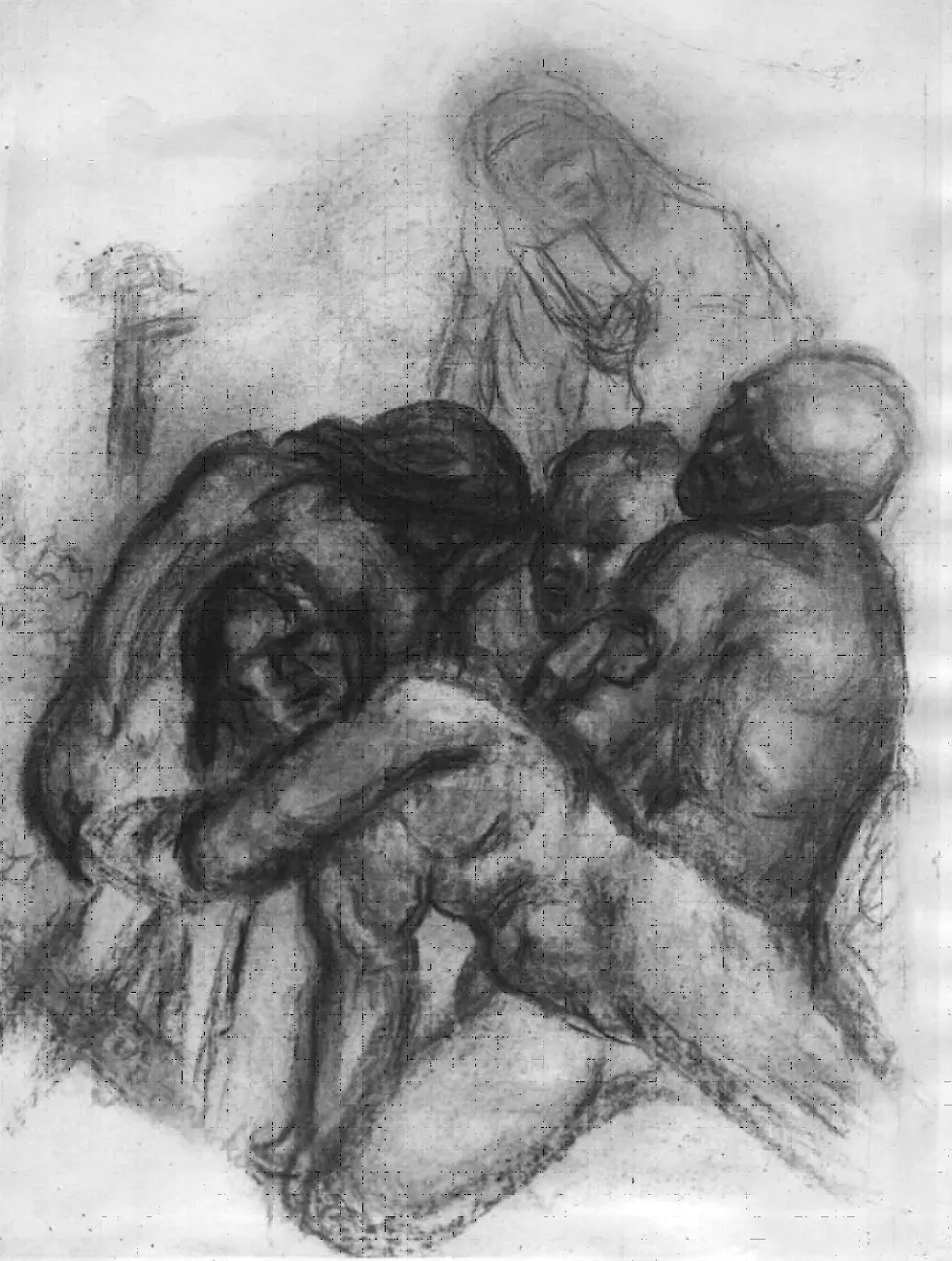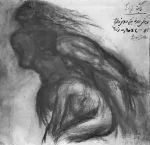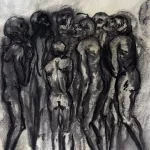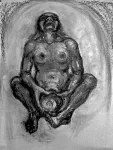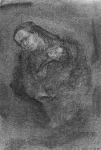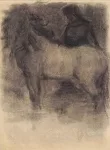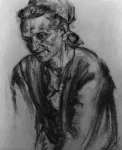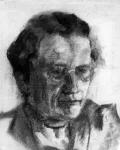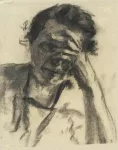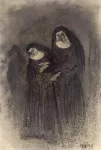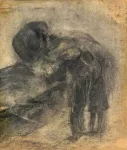During the Second World War, which she experienced in Germany from 1941 until the end, Akefeh Monchi-Zadeh discovered the technique of charcoal drawings, which she found particularly suitable for artistically processing the events and experiences she experienced. Everything that stood in such stark contrast to the mostly idyllic but always colourful world of Persian miniature needed powerful painting technique and large formats. The horror, the horrors, the nights of bombing, which she spent partly in the protective bunker, partly in the attic where she threw phosphorus bombs on the street, but also the hope of a common departure for a new, peaceful world inspired her paintings.
She often worked on miniatures and large formats in parallel. The contrast between the two forms of work accompanied her from now on throughout her life. She was never attached to special techniques, but to the content, which demanded suitable forms of expression.

